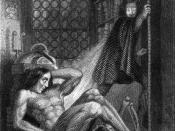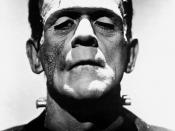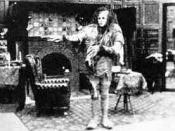Frankenstein: What makes it a Gothic Novel?
One of the most important aspects of any gothic novel is setting.
Mary Shelly's Frankenstein is an innovative and disturbing work that
weaves a tale of passion, misery, dread, and remorse. Shelly reveals the
story of a man's thirst for knowledge which leads to a monstrous creation
that goes against the laws of nature and natural order. The man, Victor
Frankenstein, in utter disgust, abandons his creation who is shunned by
all of mankind yet still feels and yearns for love. The monster then seeks
revenge for his life of loneliness and misery. The setting can bring about
these feelings of short-lived happiness, loneliness, isolation, and despair.
Shelly's writing shows how the varied and dramatic settings of
Frankenstein can create the atmosphere of the novel and can also cause
or hinder the actions of Frankenstein and his monster as they go on their
seemingly endless chase where the pursuer becomes the pursued.
Darkly dramatic moments and the ever-so-small flashes of
happiness stand out. The setting sets the atmosphere and creates the
mood. The "dreary night of November" (Shelly 42) where the monster is
given life, remains in the memory. And that is what is felt throughout
the novel-the dreariness of it all along with the desolate isolation. Yet
there were still glimpses of happiness in Shelly's "vivid pictures of the
grand scenes among Frankenstein- the thunderstorm of the Alps, the
valleys of Servox and Chamounix, the glacier and the precipitous sides of
Montanvert, and the smoke of rushing avalanches, the tremendous dome
of Mont Blanc" (Goldberg 277) and on that last journey with Elizabeth
which were his last moments of happiness. The rest goes along with the
melodrama of the story. Shelly can sustain the mood and create a
distinct picture and it...


